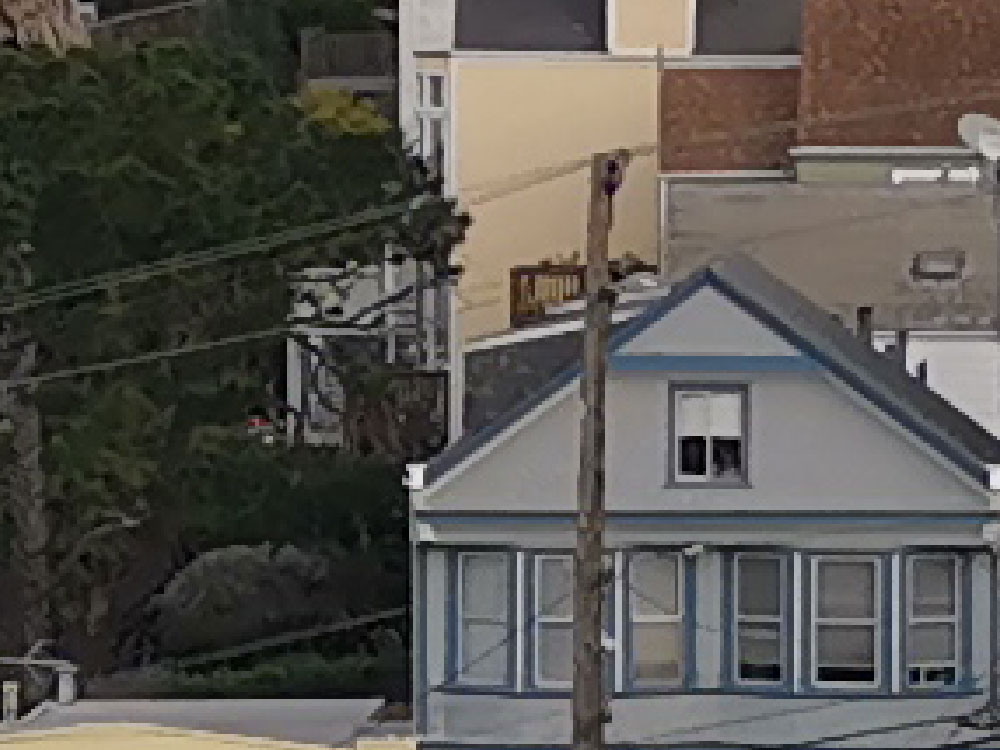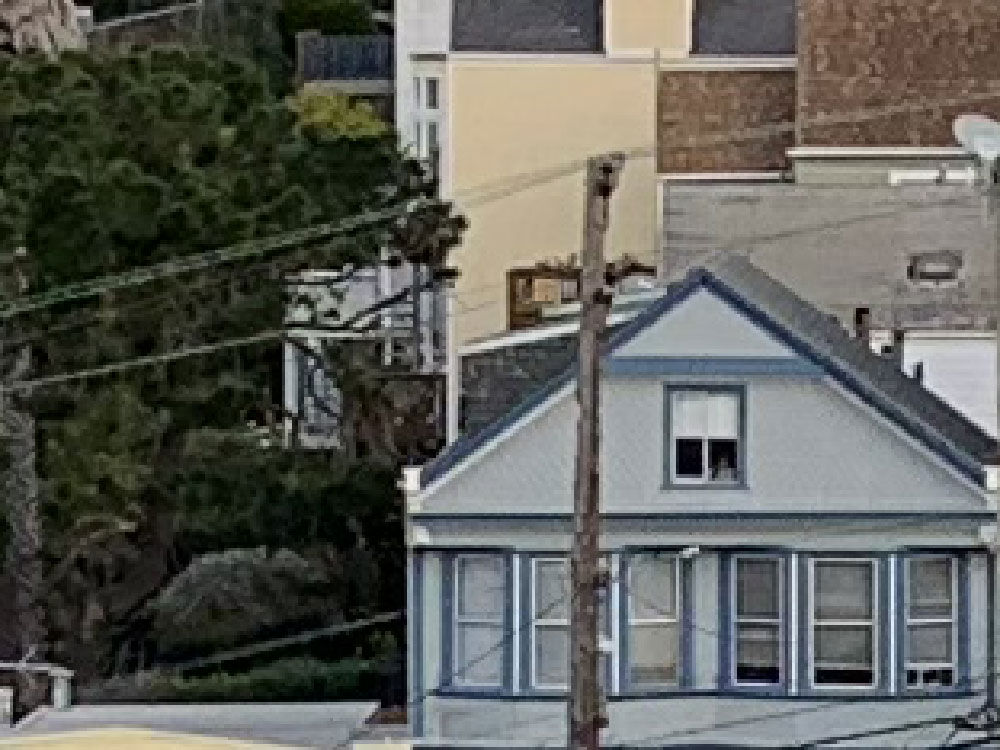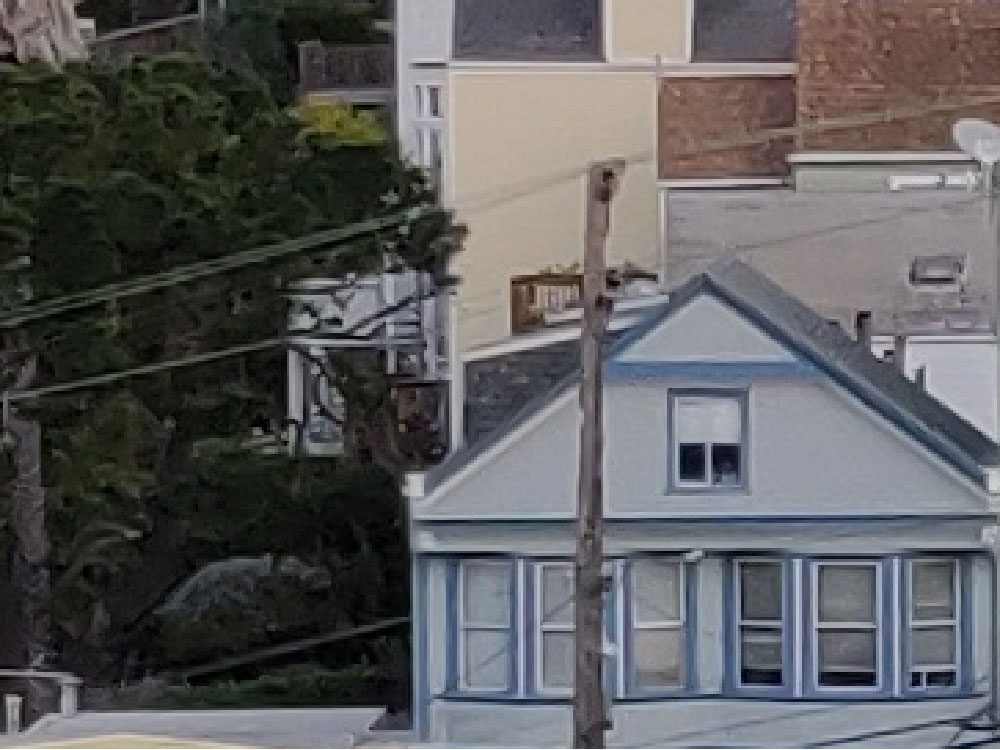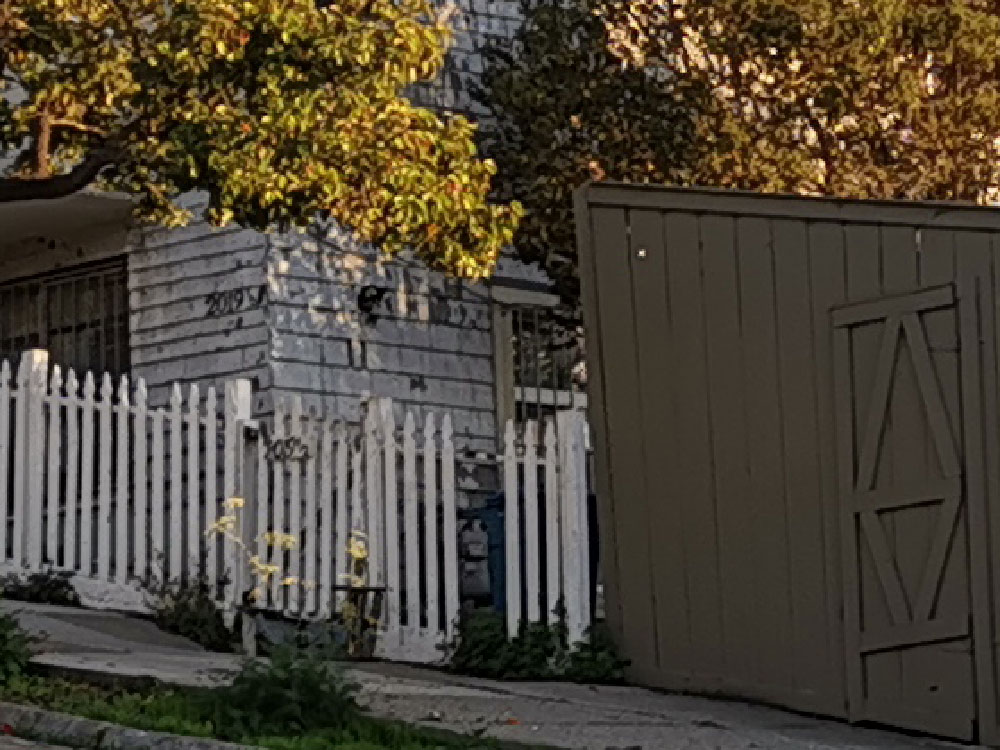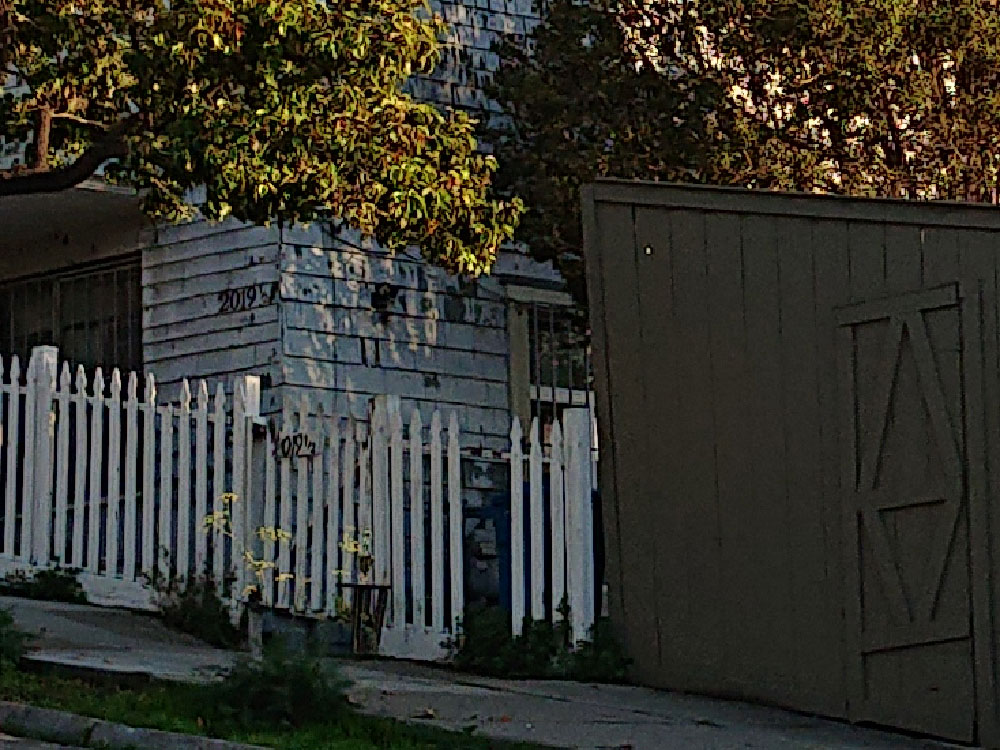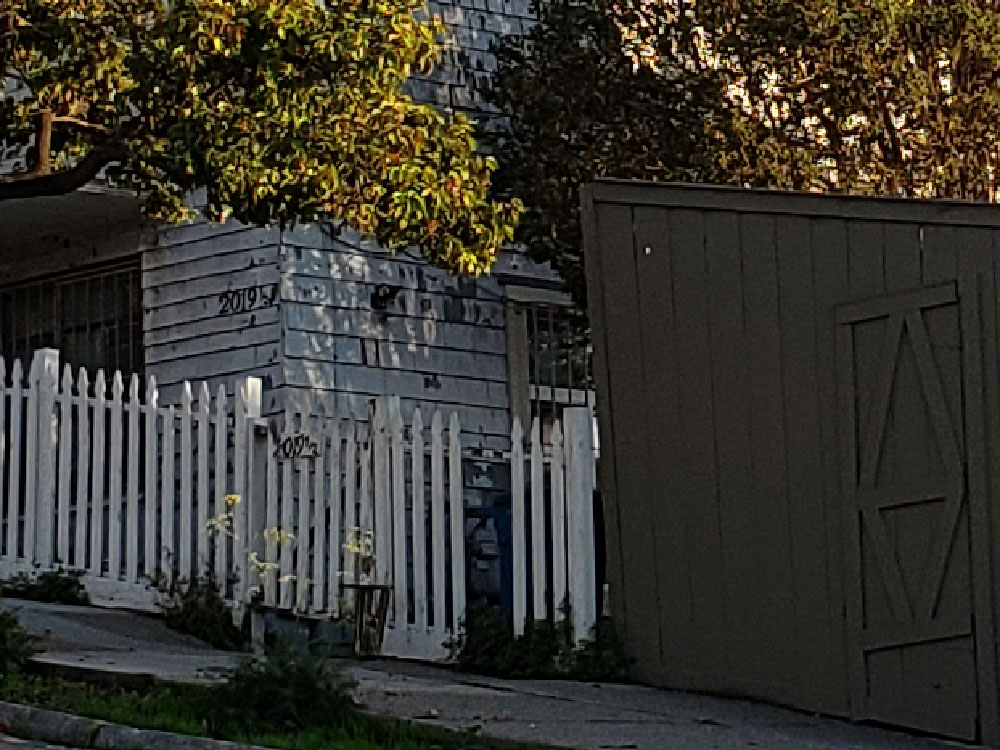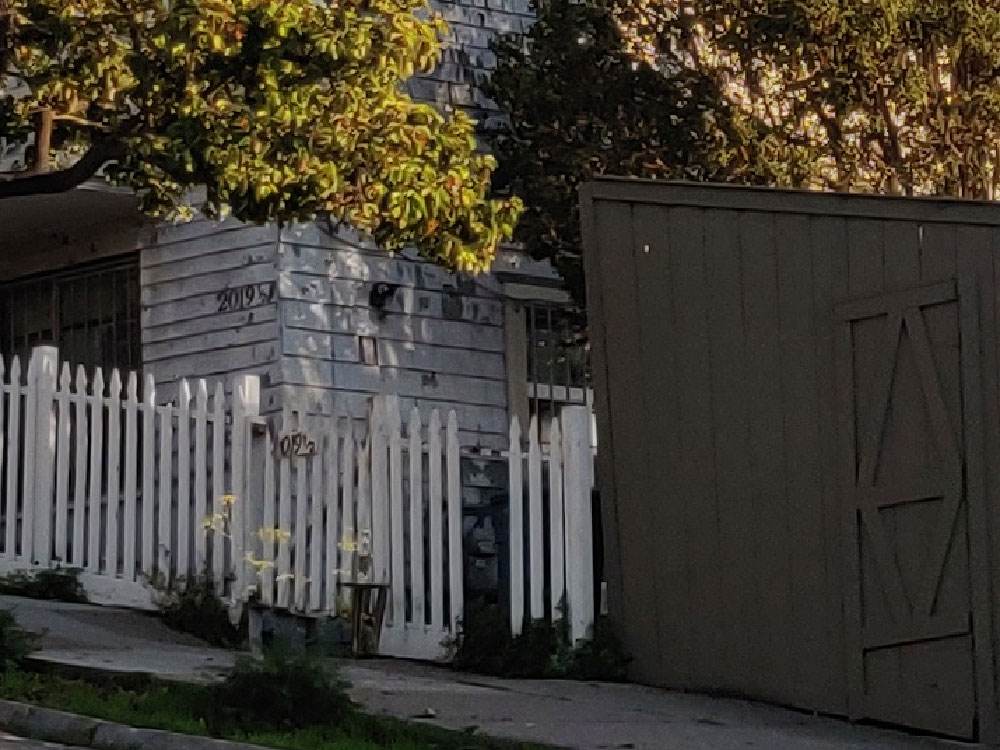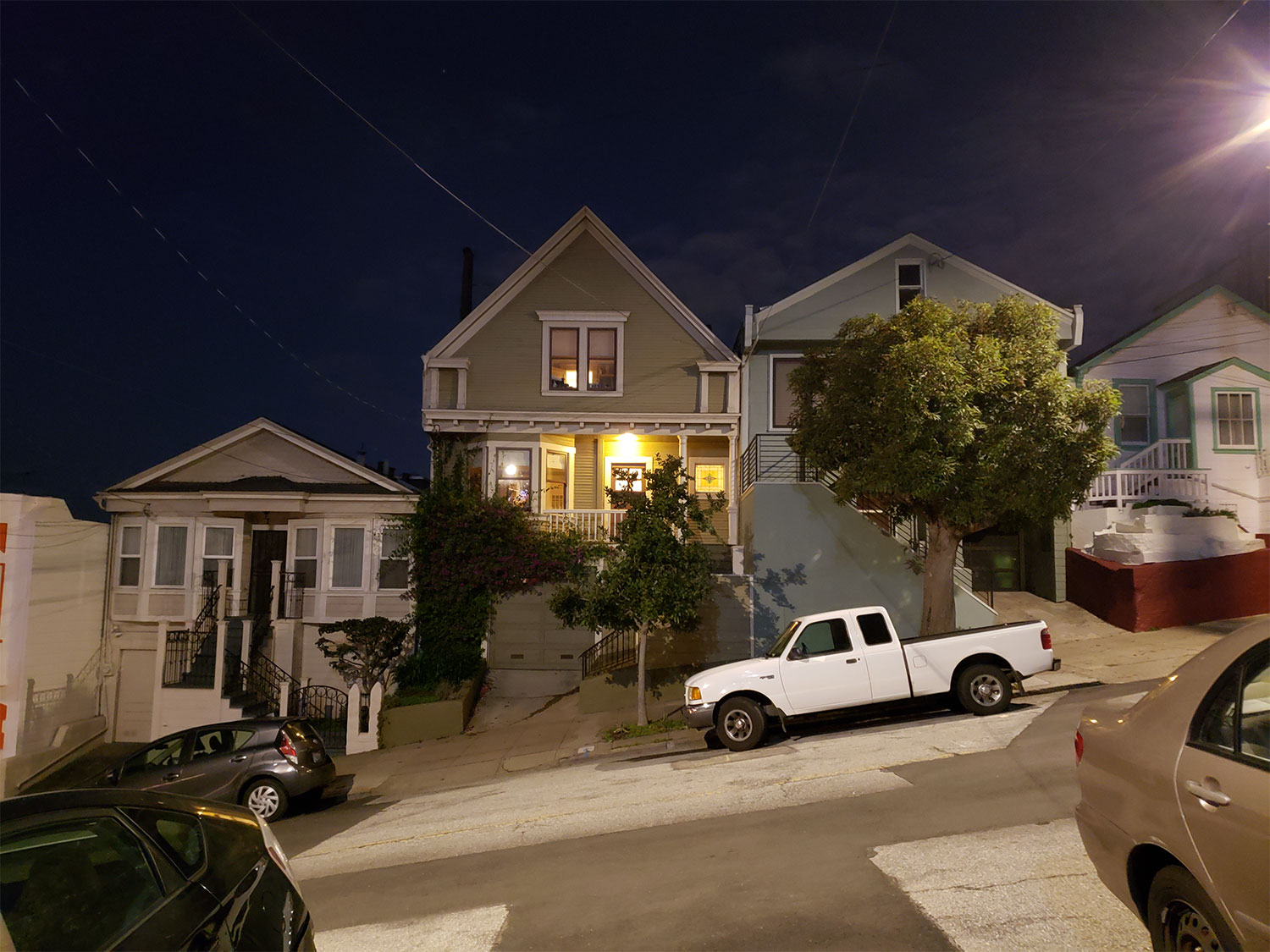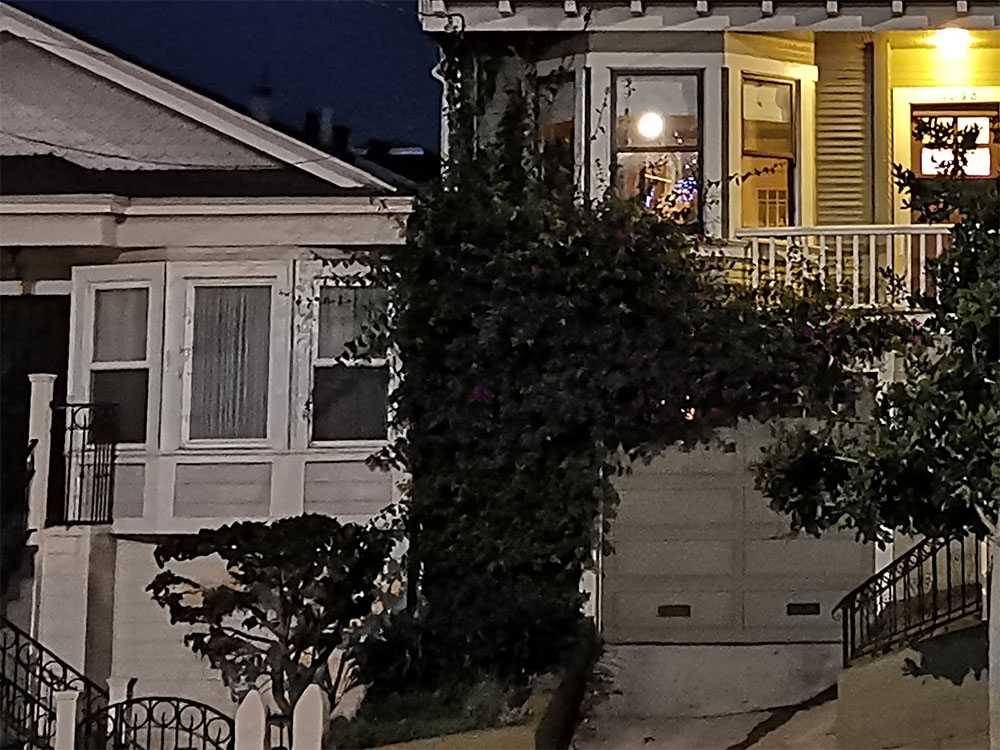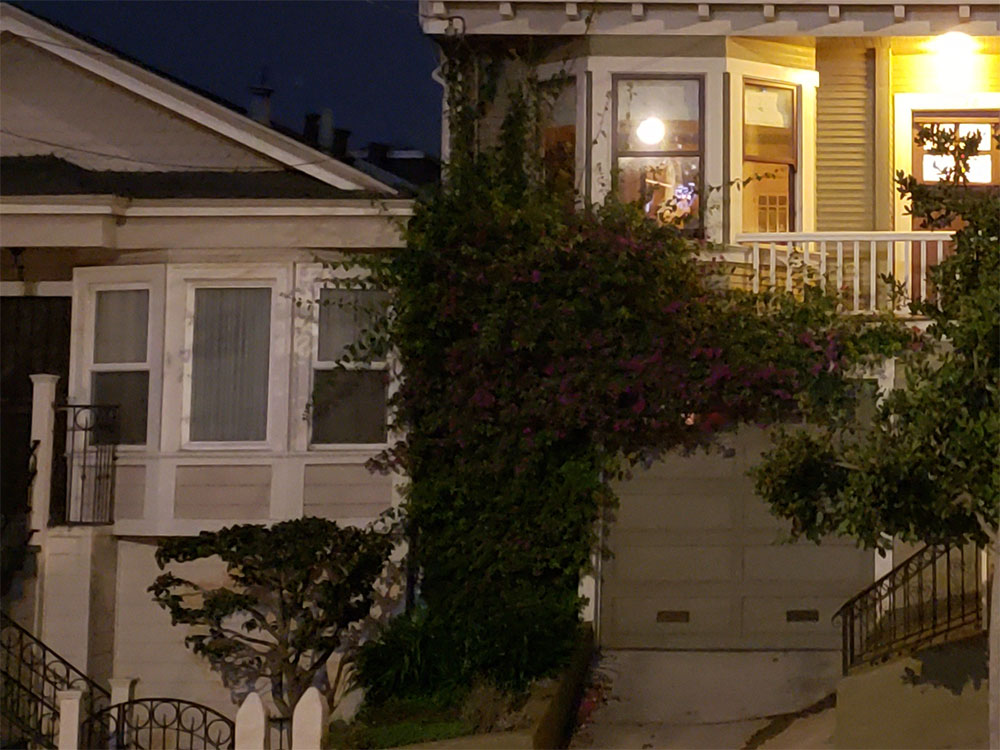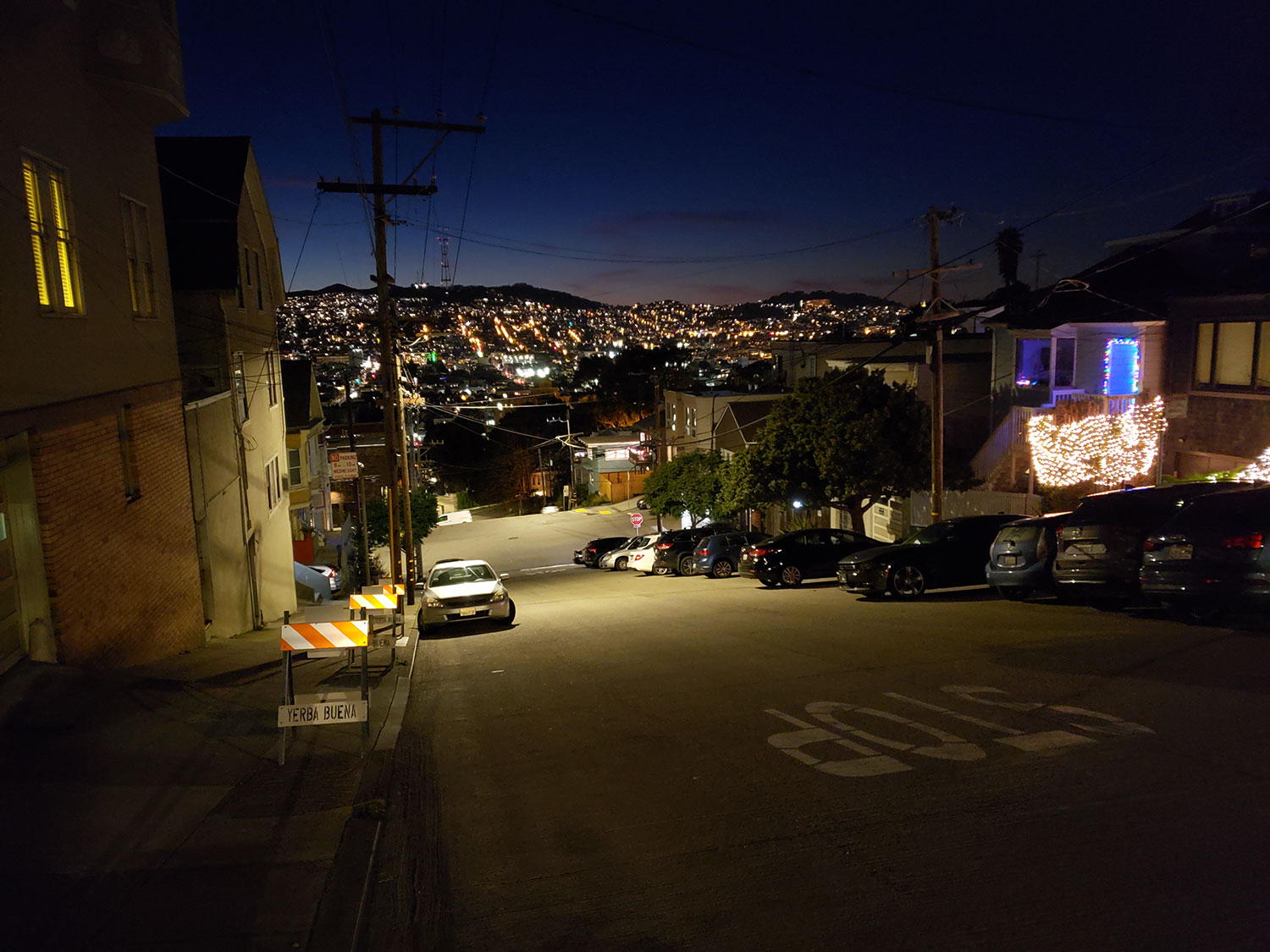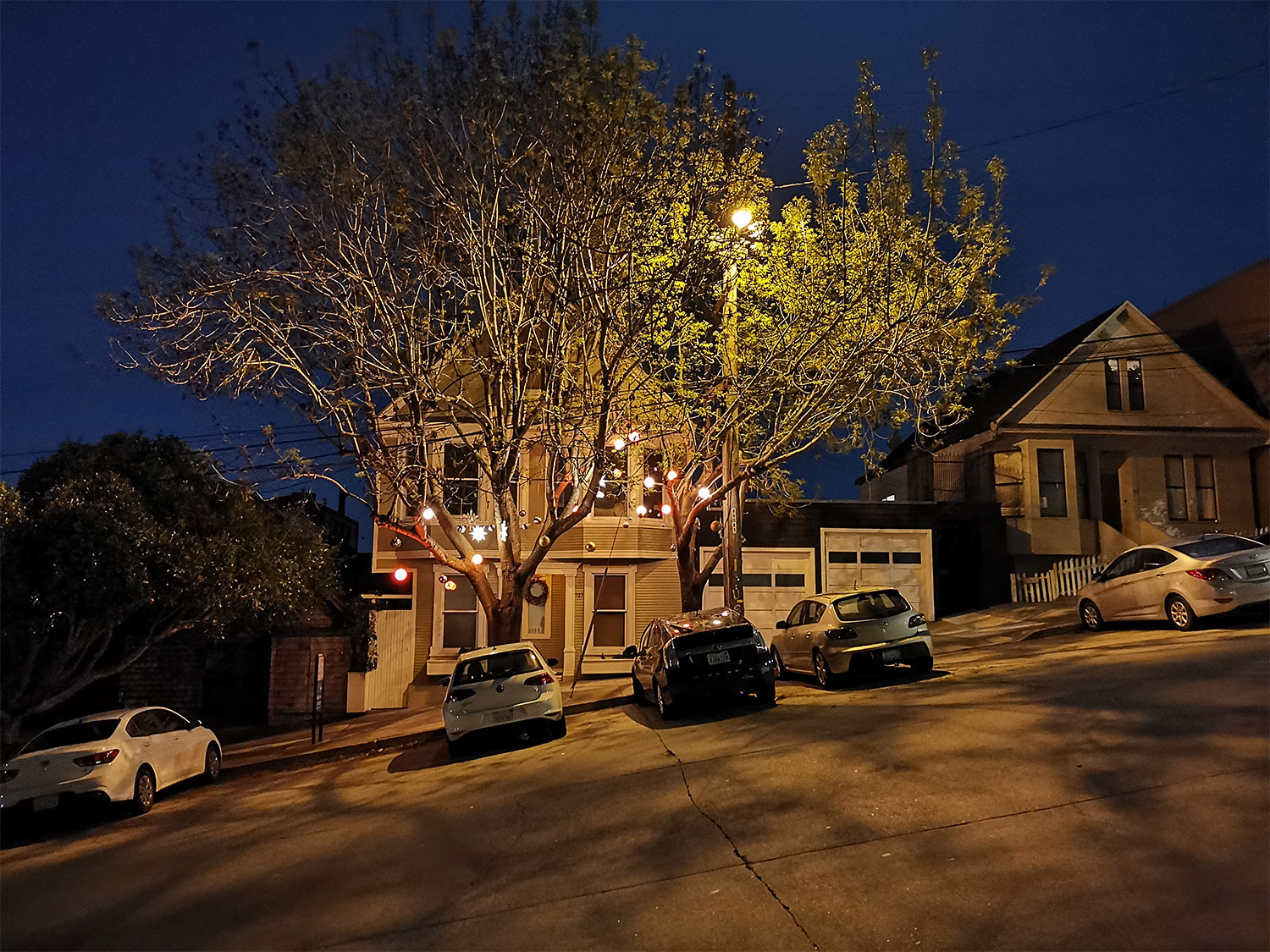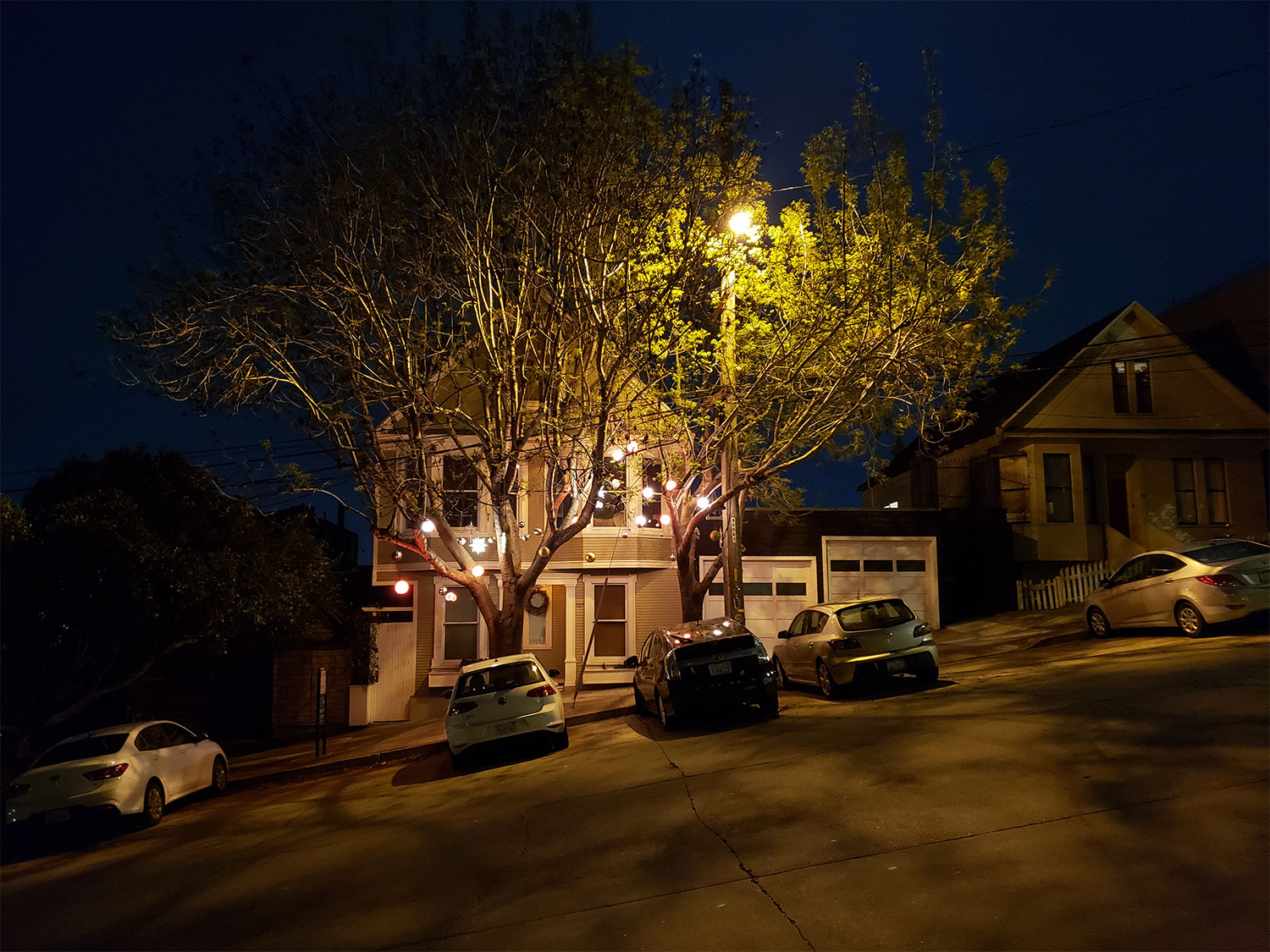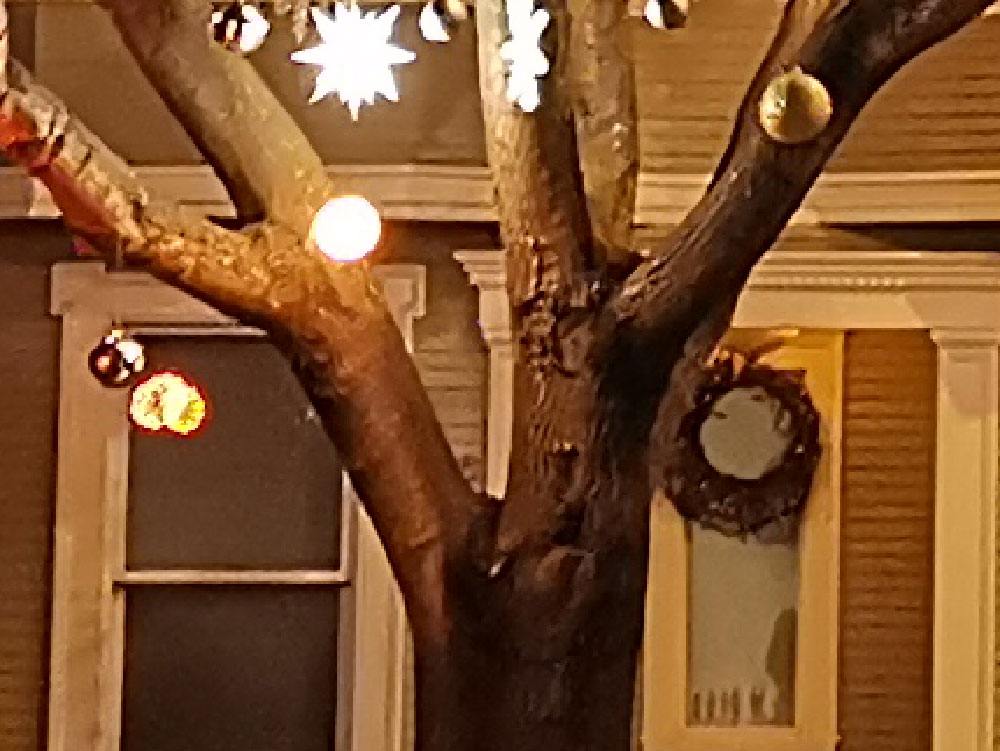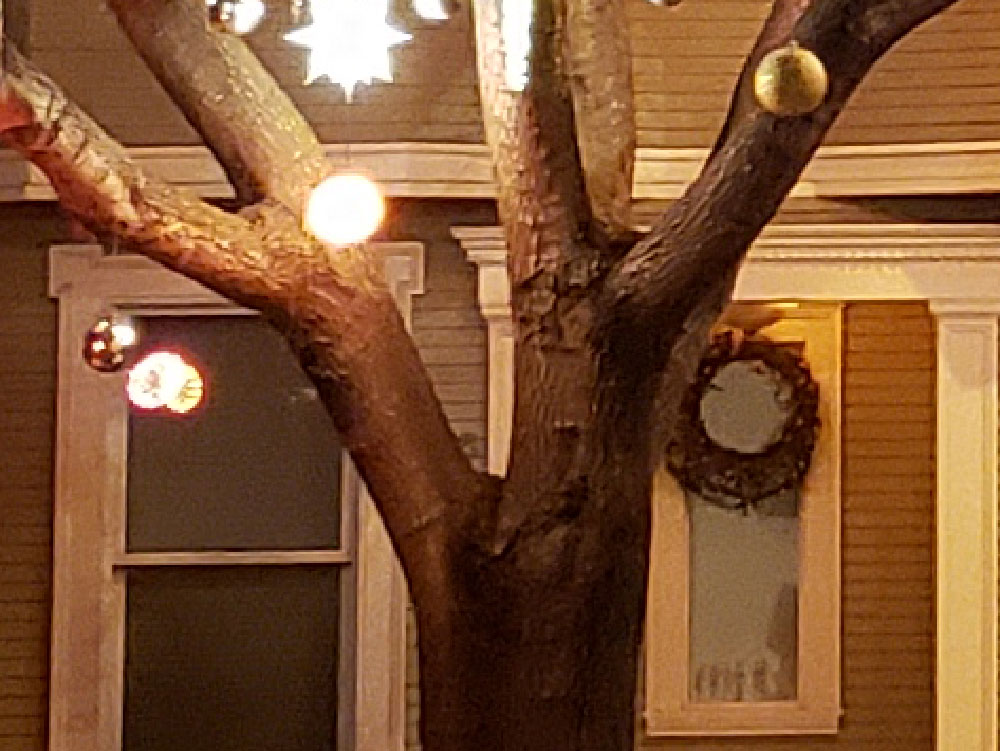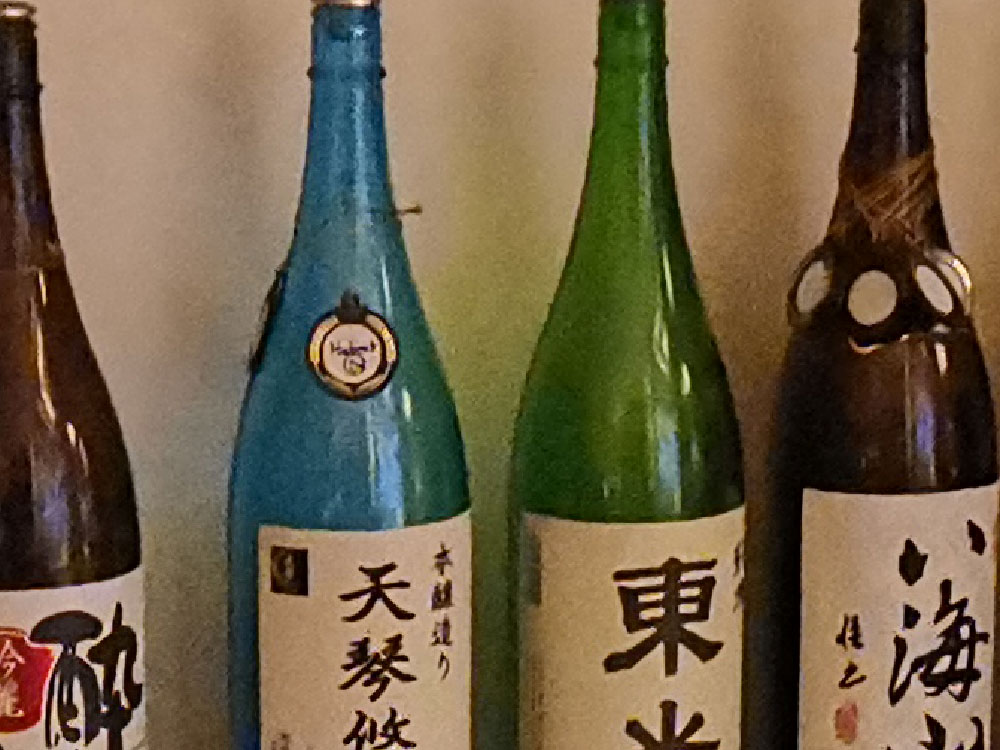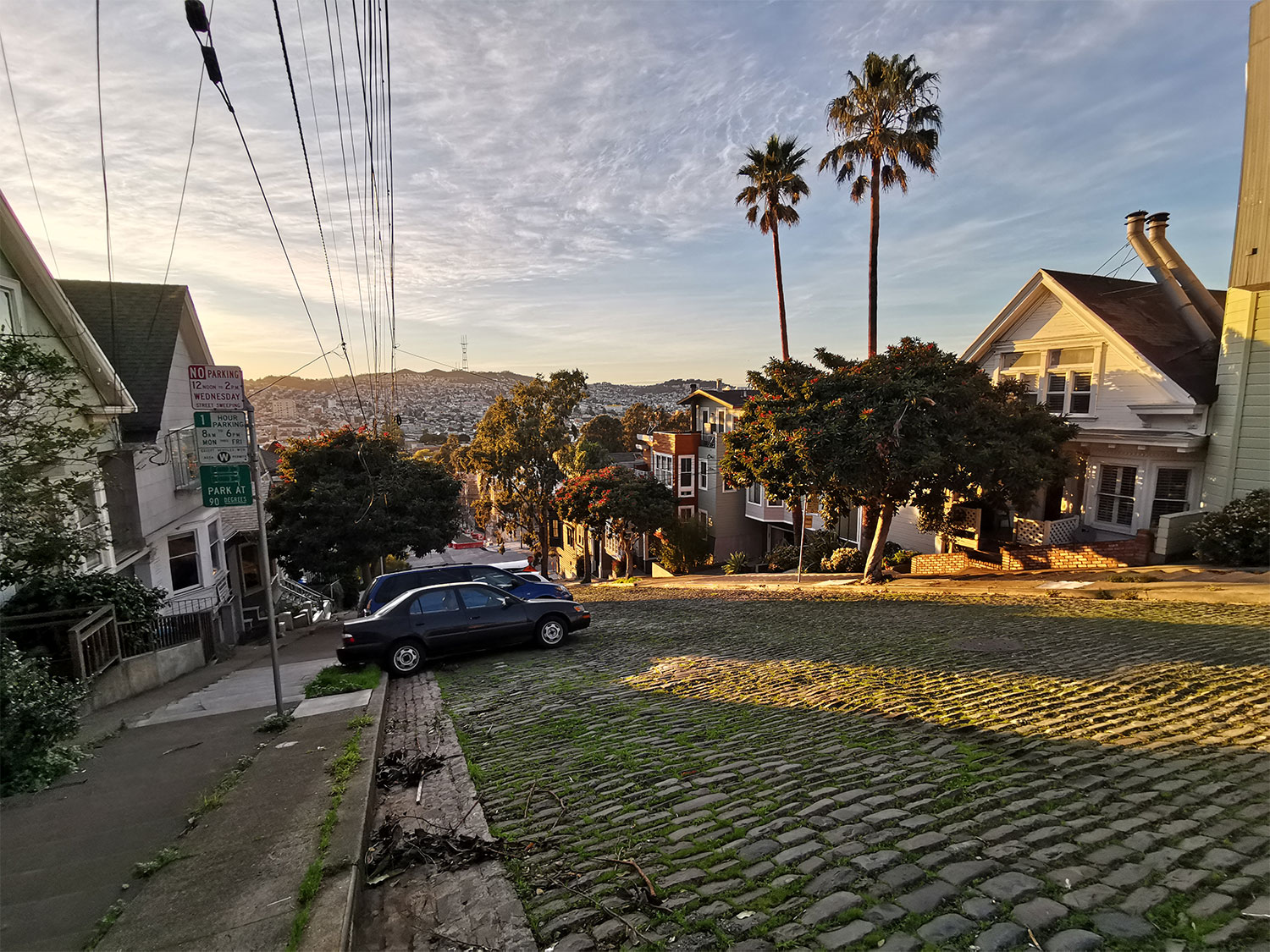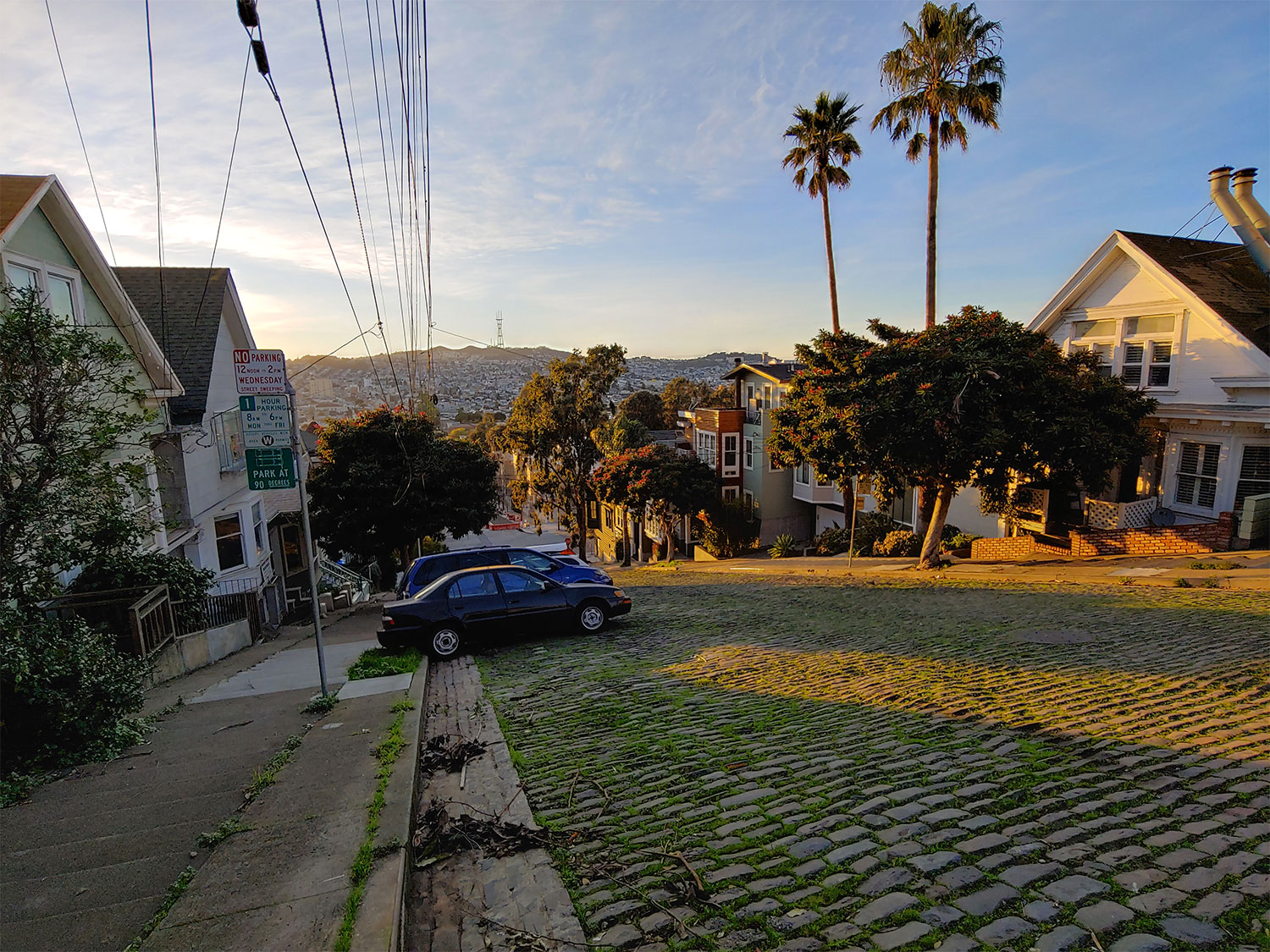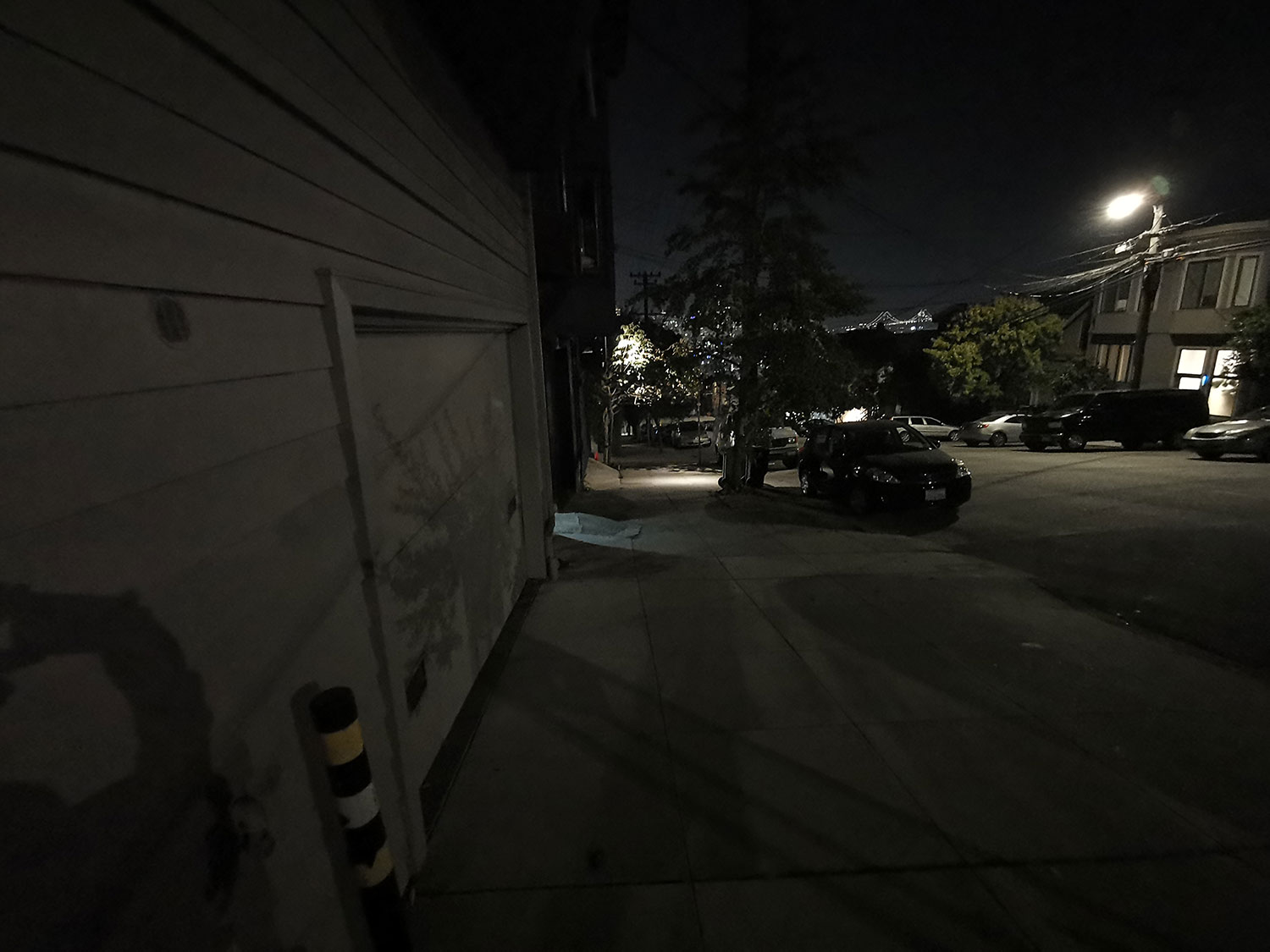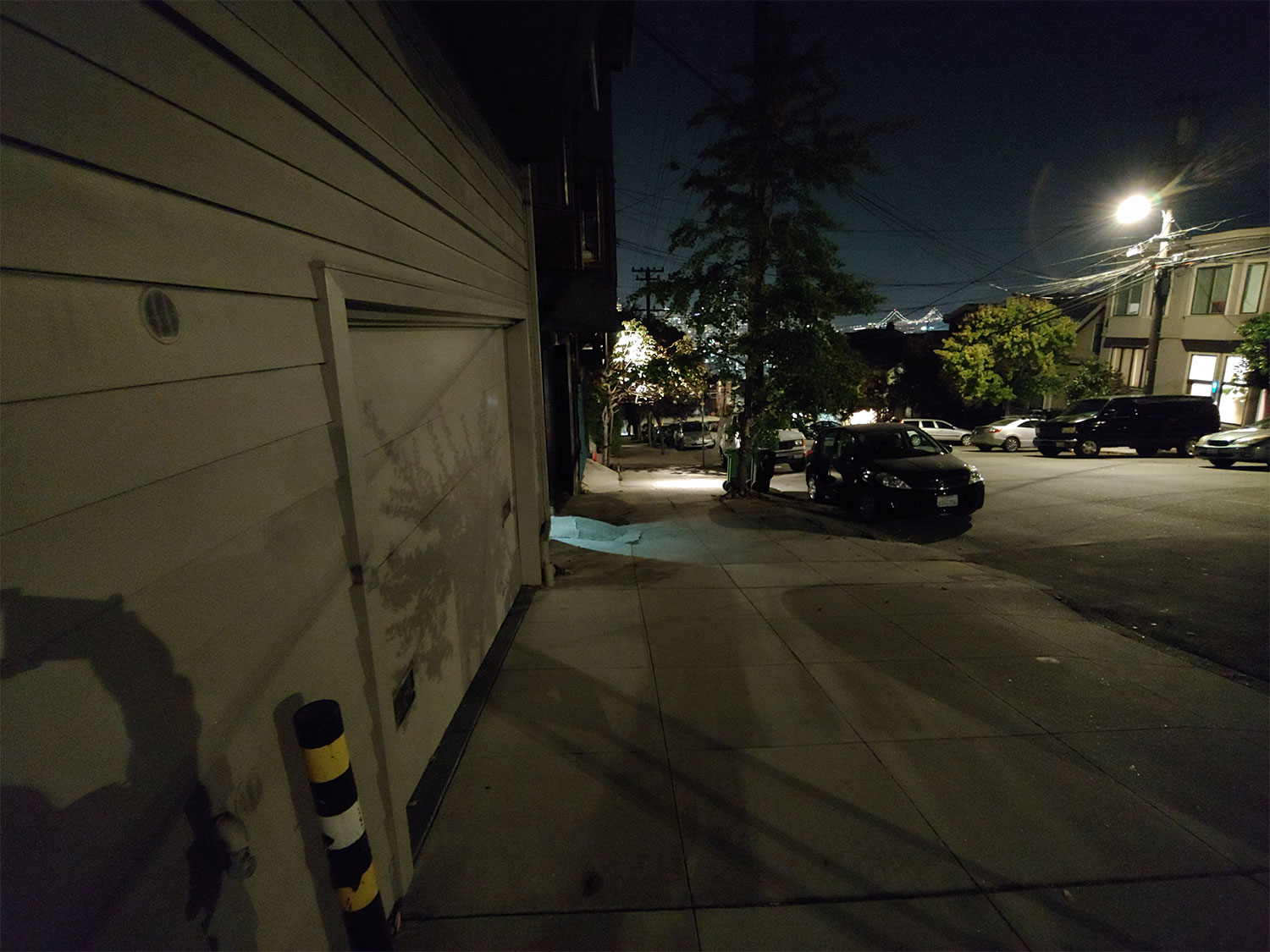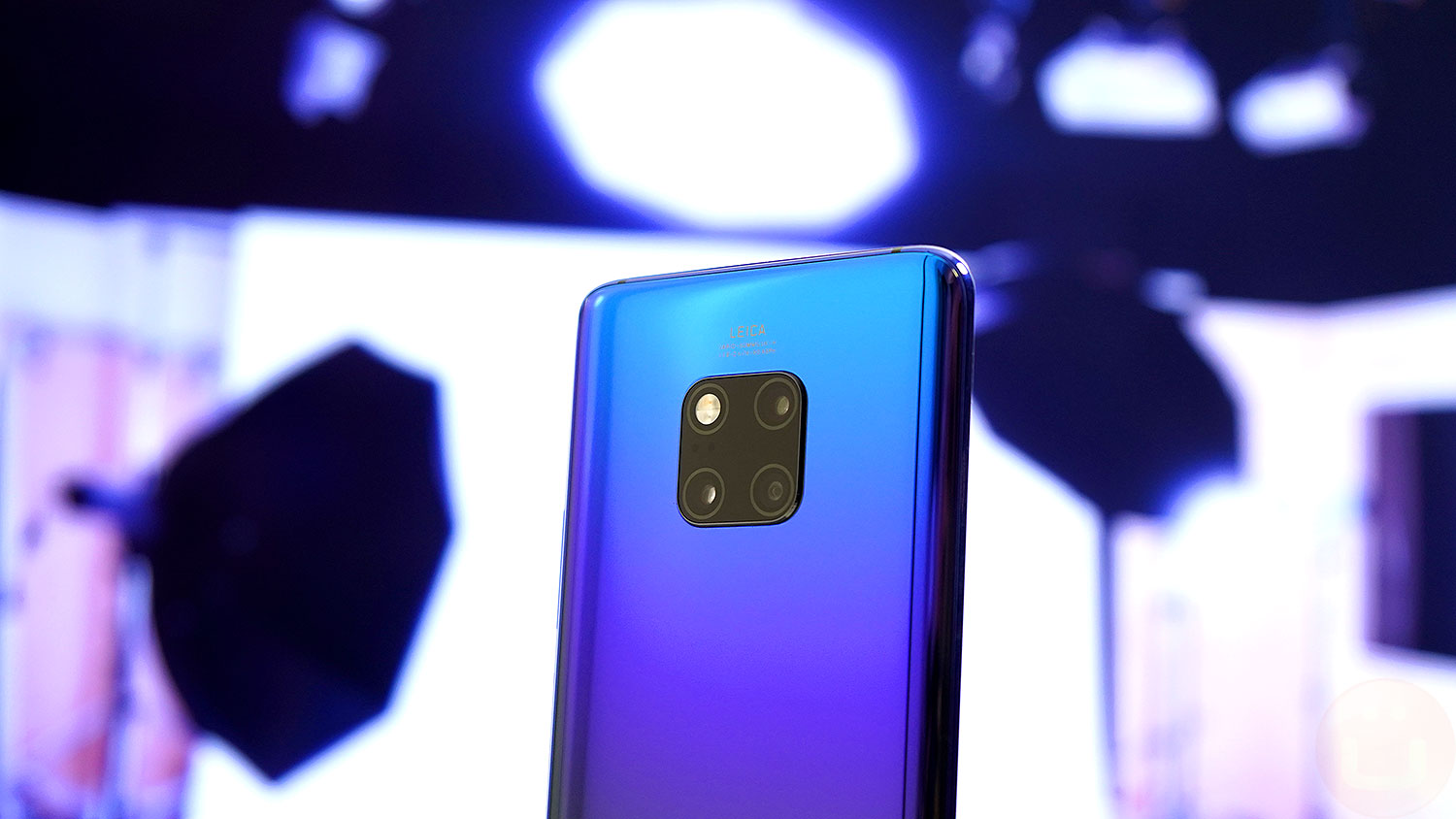
The Huawei Mate 20 Pro is Huawei’s current high-end smartphone, and as such, it packs an impressive camera system. In this review, we will go over the theoretical and real-world capabilities of this handset through the prism of our four mobile photography pillars: daylight, night, zoom, and ultrawide photography. You can also read the Mate 20 Pro smartphone review.
Learn more: what is our Camera IQ score?
Key Camera specs and Uber HW Score
- Rear Camera System (3 cameras)
- Primary camera: 27mm focal length, f/1.8 aperture, 40 Megapixel Quad-Bayer Sony IMX600 sensor (7296×5472), Phase-detection AF
- Zoom camera: 80mm (3X optical zoom), f/2.4, 8 Megapixel, OIS
- Ultrawide camera: 16mm, f/2.2, auto-focus (macro-capable)
As you can see, the Huawei Mate 20 Pro is one of the most versatile mobile camera available which covers an incredible 16-80mm focal length and packs one of the largest sensor available for mobile phones: the Sony IMX600 (27mm camera).
This hardware support for common mobile photo scenarios should help this handset to perform very well in our tests. After feeding the data to our camera hardware scoring algorithm, the rear camera system of the Mate 20 Pro gets a great score on today’s market:
Learn more: what is our camera hardware score?
Image Quality Analysis
Important: let’s clarify some terminology we’ll be using:
- “image processing”: software work that improves the image data quality
- “image filtering”: software work that changes the style (aesthetic) of the photo.
- “context photo”: a great approximation of what we see
- Including how dark the scene actually is
- Only to provide the context of the shot.
- Not a quality benchmark
A note about the Uber IQ Camera Score: our camera scoring system is based on four “Pillars” or sub-scores that provides much-needed nuance: day, night, zoom and ultrawide photography.
Note that we use the default “Auto” mode with a resolution of 3648×2736 (4:3). Higher resolutions can be selected manually, but come with caveats linked to the Quad-Bayer sensor possible configurations.
Daylight photography: 179
The Huawei Mate 20 takes outstanding photos, and on the surface, all high-end phones tend to do very well in broad daylight. However, when we look closer, differences start becoming more visible. If you want to compare 10-12 Megapixel images on a ~1-2 Megapixel screen, you have to crop!
Scene #1: details
In this shot, we can crop into high-detail areas to see how the Mate 20 Pro handles detail preservation. Naturally, its 10 Megapixel resolution will put it at a slight disadvantage when compared to 12MP or 16MP cameras. But detail/texture preservation is also about HDR, exposure and image processing.

Context Shot

Context shot, cropped
As you can in this comparison, the iPhone XS Max has good details preservation. It is particularly visible if you compare both shots with the context image. The color reproduction of all the phones involved is good enough, and although some phones use heavier filtering to boost contrast, nothing comes out as terrible.
The OnePlus 6T can capture slightly additional sharpness and details in broad daylight, thanks to its 16 MP resolution. This phone also does use more visible sharpening, but the noise reduction seems less aggressive than the mate 20 Pro, which has some surfaces that are nearly flat-colored. Interestingly enough, the OnePlus 6T isn’t able to preserve more of the fish-scalepatternsn from the house’s siding when compared to iPhone XS.
Scene #2: High Dynamic Range (HDR)

Context Shot
The Sony camera does have better detail preservation in the shadowed area but struggles with the high contrast of the trees and breaks down a bit by making the leaves in the shadow way too dark with strong aliasing. Fortunately for Sony, few people would pick up on it because the tree is generally noisy.
It’s fair to say that the Mate 20 pro loses texture on the brown door and fence, not because of resolution, but because of strong noise-reduction filtering. The Mate 20 Pro also significantly modified the lighting of the tree by brightening up the shadowed area using HDR.
In comparison, the Galaxy Note 9 shoots a photo that handles HDR with a more natural look and manages to preserve a more natural looking aspects to the trees and brown door and fence, at the cost of having a slightly visible noise. It also handles the leaf shadows much better than the XPERIA XZ2, with less Aliasing.
Generally, both the Mate 20 Pro and OnePlus 6T have slightly better exposure and HDR settings on things like street signs. In the case of the Mate 20 Pro, it’s probably due to the Quad-Bayer sensor HDR mode. The OnePlus 6T produces a softer image, and some people might prefer that.
The XPERIA XZ2 and the Galaxy Note 9 had a general tendency to slightly over-expose some parts of the scene. However, in the grand scheme of things, the house and trees were the main subjects.
Huawei is one of the OEM with the most filtering on images, and depending on your personal preferences, you may like or dislike the style. What we do know is that in some instance, filtering images too much does lead to loss of details. It does not happen on every photo, but it is quite definitely a style that you should aware of.
For example, when you take food pictures with red meat, it’s not unusual to see meat being over-processed (no pun intended) and appear strangely red.

The meat did not look like this
One way to go around it is to use the “Pro” mode, but it is not as convenient as the auto-mode. If you enable “Master AI,” you may get even more pronounced filtering. While I was cooking something, I took two pictures in Auto vs. Pro mode. Below, you can see the sharp difference in image filtering. Both are shot with the Mate 20 Pro.

Auto mode (left) vs. Pro mode (right). Pro mode has more natural colors and lighting
Night light photography: 179
Smartphones almost all have a tendency to brighten up night photos in comparison with what your eyes see. It’s a choice made by phone manufacturers, and that explains why the context photo is almost always darker: that’s the best representation of what we are looking at.
Scene #1: details

Context shot: the scene looked like this
First, we can see that the Huawei Mate 20 Pro has made substantial changes to the brightness, colors, and mood of the scene. The yellow lighting tint has turned into whiter lighting (street lights have a yellow tint in the scene).
The Galaxy Note 9 isn’t perfect either but is a bit more faithful (brightened) acquisition of the scene with warmer colors than there is in the scene. Remember, when it comes to low-light photography, brighter is not always better, but some added brightness can be arguably more agreeable for phone users, so it’s to be expected. Simple color-levels tweaking of the Note 9 photo would get us closer to a natural state.
If we take a closer look, you can see that despite capturing a lot of details in a challenging scene, the Mate 20 Pro doesn’t quite manage to preserve the scene’s natural color hue. That’s one of the most difficult things to achieve for a smartphone because the sensor is (relatively) small and the light so scarce.

Context shot, crop
In low-light, the Galaxy Note still displays a significant difference with the competition. As soon as you inspect the photos from up-close, the data quality is visibly higher whether it is in color preservation, noise levels or details.
The plants left metal gate door highlight the superior low-light capture abilities of the Note 9 when compared to the Huawei Mate 20 Pro. It is undeniable, and it is a trend that can be found in shots after shots.
"MATE 20 PRO IS GENERALLY BETTER THAN PIXEL 3 AND THE IPHONE XS IN LOW-LIGHT"Yet, the Huawei Mate 20 Pro is no slouch when it comes to traditional low-light photography: we found that the Mate 20 Pro is generally better than Pixel 3 and the iPhone XS in low-light. We also found that Huawei’s own P20 Pro was just a hair better, seemingly due to tuning differences.
Just like in daylight photos, the Mate 20 Pro does add a good amount of filtering on the images. Some of it is to brighten the scene, and more is added for extra contrast and sharpness. This significantly changes the nature of the scene, such as in the example below:
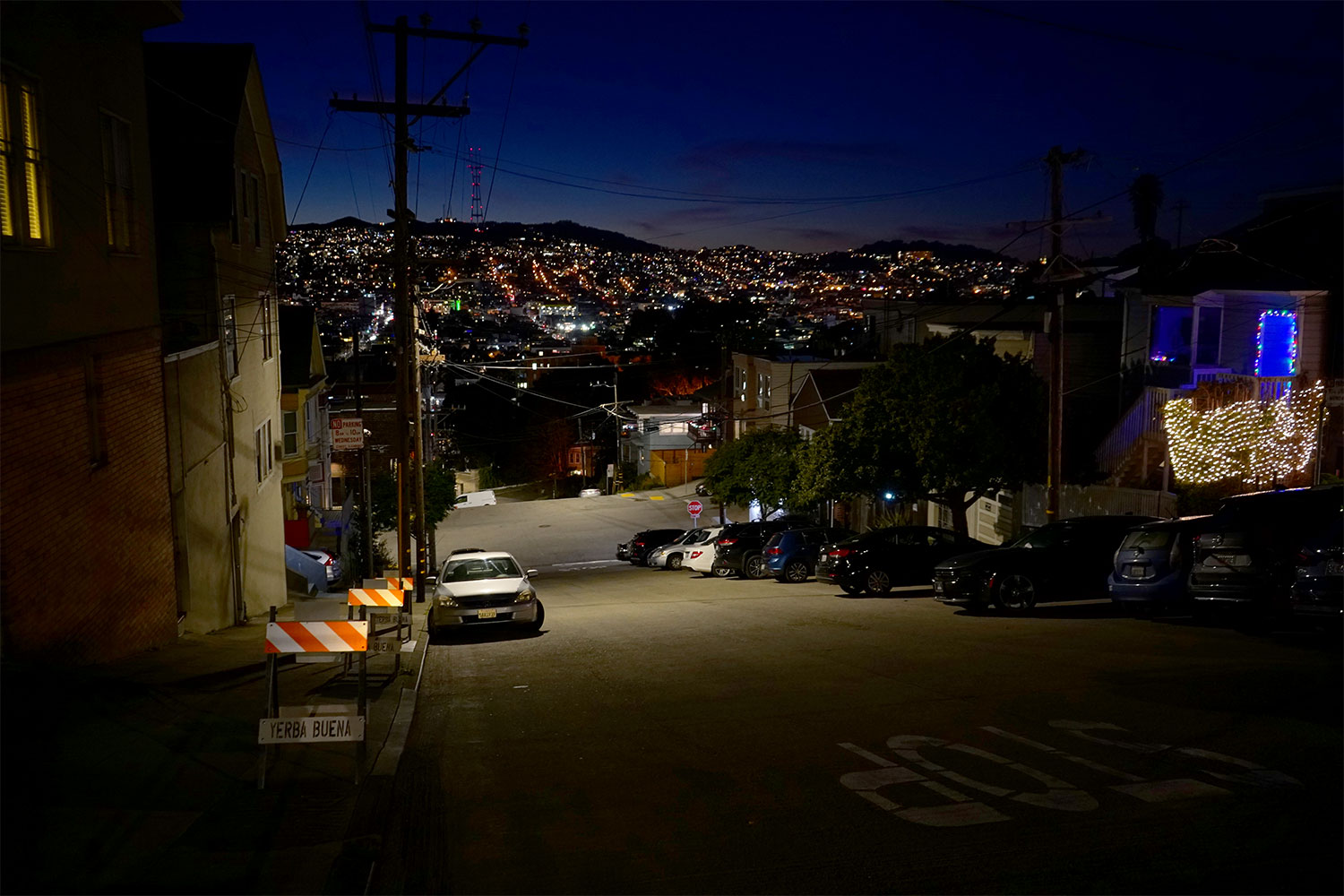
Context shot: what the scene looks like
Scene #2 : HDR at night
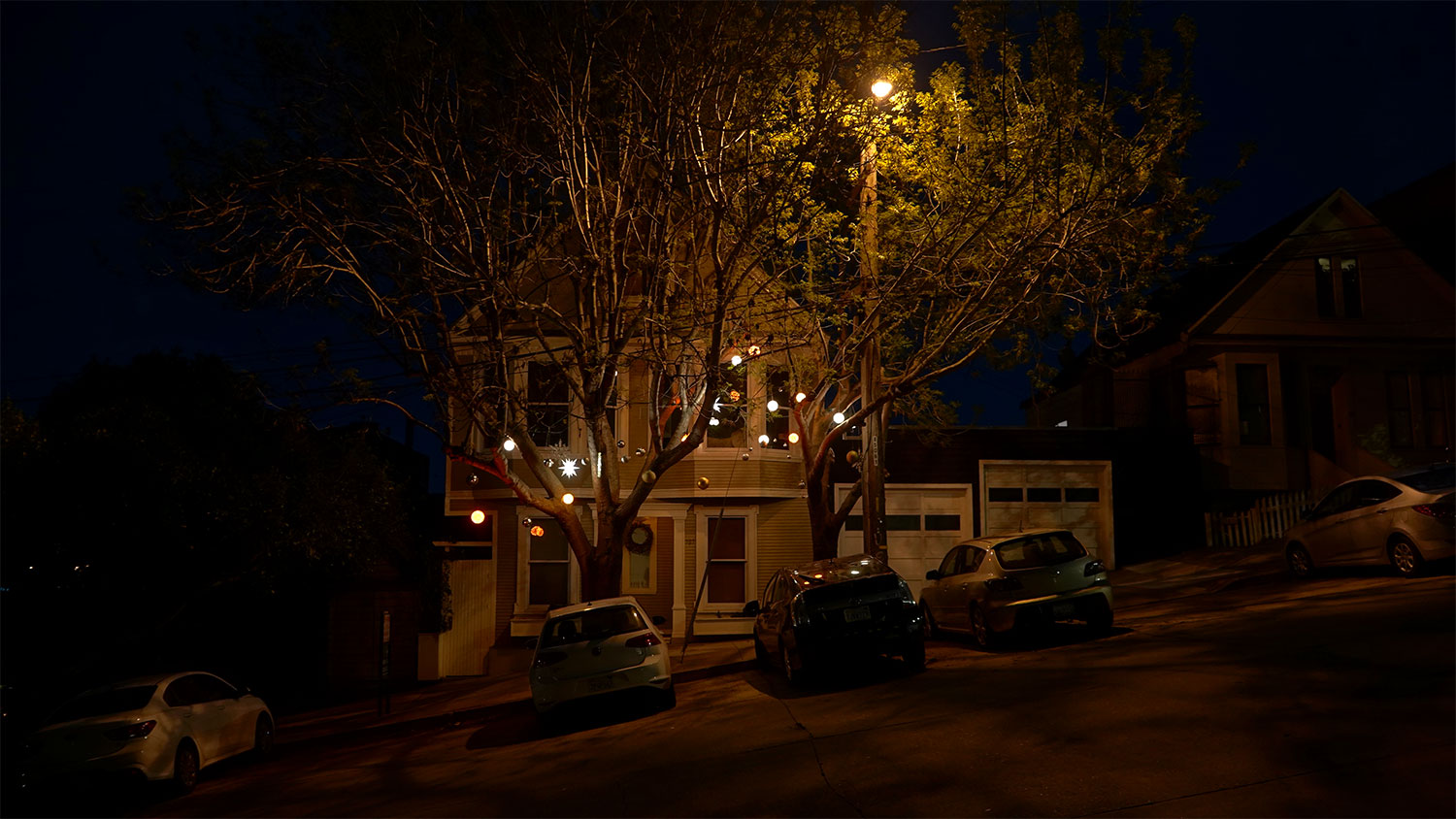
Context Shot, what the scene looks like
Both the Mate 20 Pro and the Galaxy Note 9 capture high-quality images, with some additional brightening, when compared to our context shot. The Mate 20 Pro makes more modifications to the image’s lightness, but it is possible to dial it back to a natural setting with a simple tweak of the color Levels.
However, the Mate 20 Pro did use a contrast filter that makes the lighting a bit harsher than the scene is, and this change cannot be easily undone. For reference, I’ll show you the scene shot with a lower-priced phone, the Honor View 10 (~$380). As you can see, the View 10’s camera sensor struggles with the natural color of the scene and is, of course, inferior to higher-end camera phones in every way.
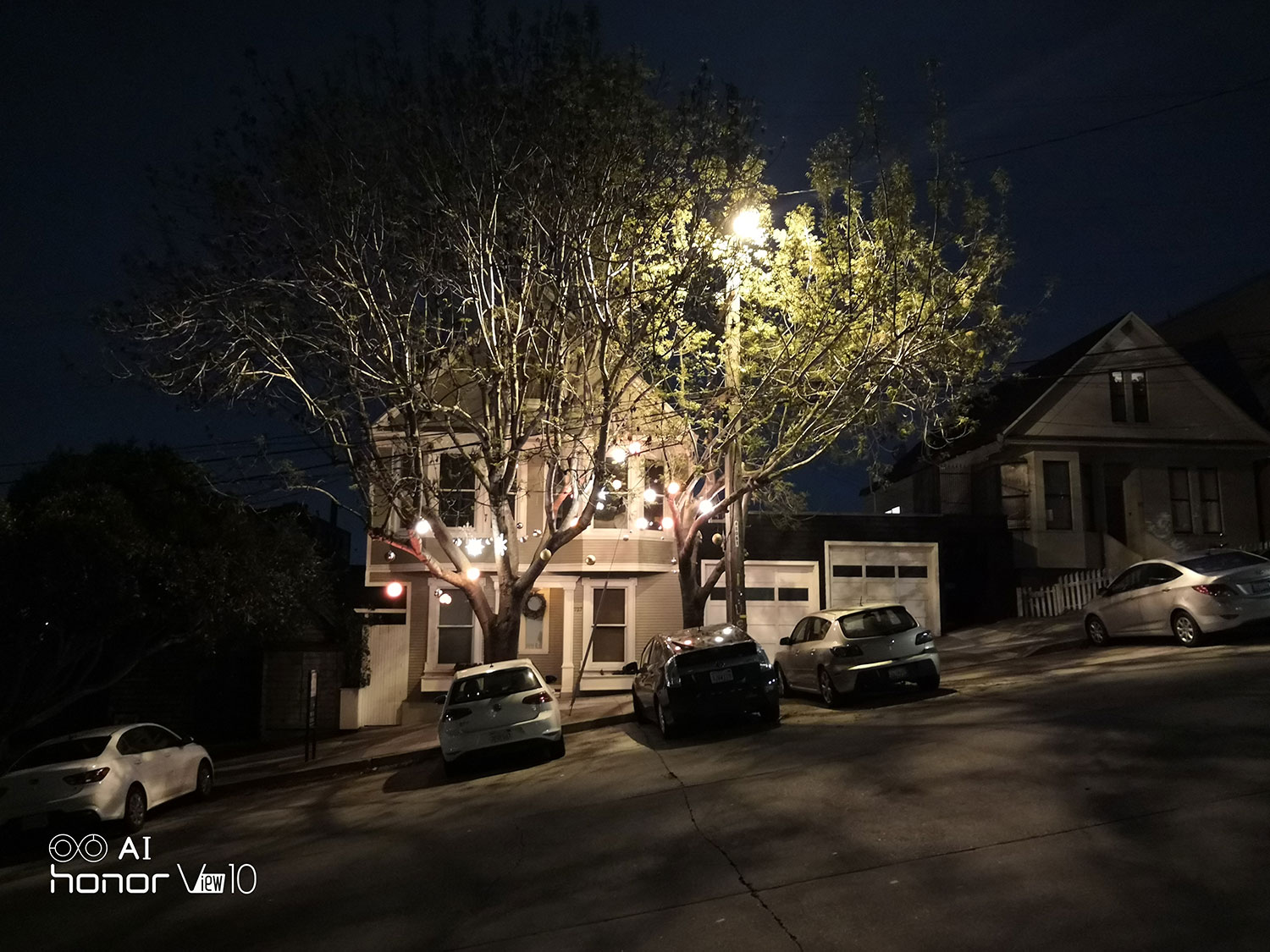
Honor View 10 photo
If we take a closer look at the center, we can notice that the Mate 20 Pro has slightly fewer details when compared the Galaxy Note 9. It is partly due to a stronger noise reduction attempt, but also because of the 10 vs. 12 Megapixel resolutions.
The texture on the blinds, the siding under the upper-left window and on the tree’s bark are visibly different. Both phones use artificial sharpening filters that create a “ringing effect” most visible along the branches to the right, but the Mate 20 Pro has more filtering applied to the image.
Yet, the Huawei Mate 20 Pro tends to take better night photos than prestigious handsets such as the Google Pixel 3, the iPhone XS or the LG V40. Here’s an example against the Google Pixel 3 in a classic low-light photo in a 0.5 LUX lighting environment (we’ll review various long-exposure modes in an upcoming article). For reference, 0.5 LUX is a point where colors are starting to fade to human eyes.

Context Shot
Both brighten the scene, but the Google Pixel actually reproduces the lighting level more faithfully, which is good in terms of predictability (you can brighten the photo with a filter before sharing). But the real difference comes when you take a closer look at the photo data from up close.
The Mate 20 Pro photo is sharper thanks to a mix of genuinely better image data and some image filtering, but not excessively. However, the original color hues have changed to the point where it would make the Mate 20 Pro photo hard to filter to a more natural-looking state.
Night Mode / Night Sight will be the object of a different article since it’s an offshoot of low-light photography, but needs to be placed in the proper context of taking a picture in 1/20 second vs 4-6 seconds.
Zoom photography: 103
When it comes to zoom capabilities, the Huawei Mate 20 Pro and the Huawei P20 Pro dominate the mobile photography landscape, thanks to an 80mm focal length (35mm equivalent) with Optical Image Stabilization (OIS). The photo samples will speak for themselves, as there isn’t a need for lengthy descriptions when the difference is so abrupt. We provided a context shot to show you what the original texture looked like.

Context shot, what the scene looks like when zoomed in
Note that these toys are a bit more challenging than things like street signs because camera apps can more easily smooth out straight lines (street signs and other flat surfaces) to add sharpness artificially. Organic textures stress the optical more, even if there’s nothing wrong to use algorithms to reconstruct details.
"THE MATE 20 PRO WON EVERY ZOOM CHALLENGE WE THREW AT IT"In fact, here’s a street scene that is also a good zoom test with the Mate 20 Pro, the iPhone XS and the Pixel 3. Consider the mural painting, let’s zoom on it and inspect crop photos of the captures. Regardless, the Mate 20 Pro won every zoom challenge we threw at it.
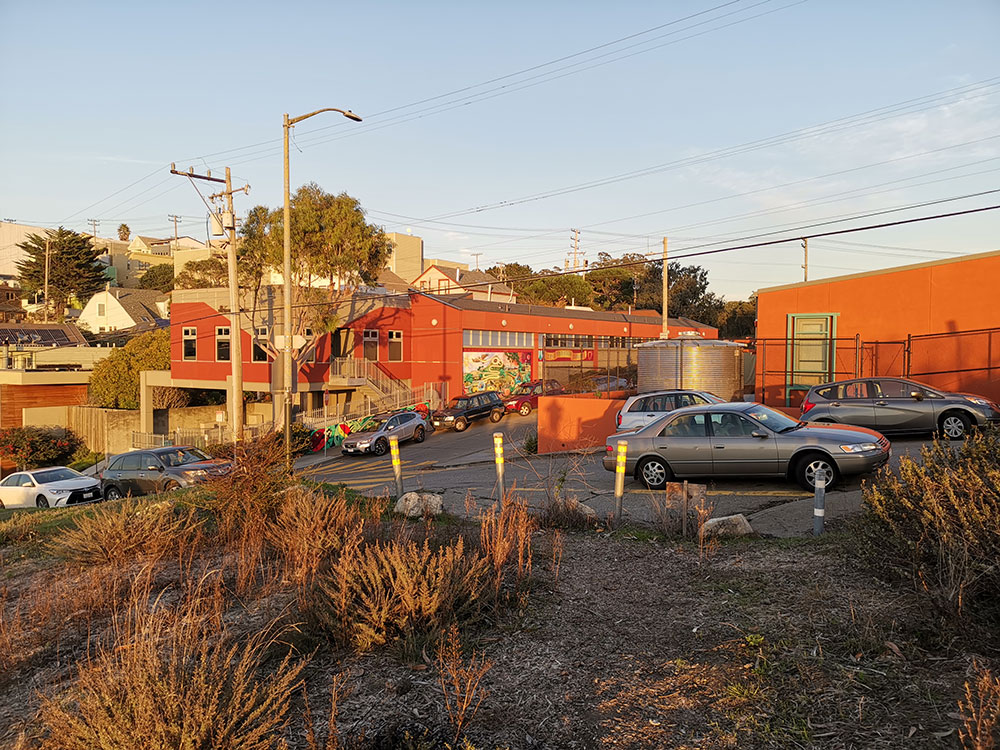
Context Shot, we’re going to zoom on the street art
When comparing both the iPhone XS and the Pixel 3 to the Mate 20 Pro, the Mate 20 Pro’s 3X optical zoom clearly has the edge. Also, it is interesting to see that the iPhone XS 2X optical zoom is sharply superior to Google’s software-enhanced zoom, even though Google’s algorithm should, in theory, achieve near-parity with a 2X optical zoom, in ideal conditions.
From a color point of view, the iPhone XS has the most faithful color rendering in this shot, with the Mate 20 Pro and the Pixel 3 vastly changing the color hues and saturation.
Ultrawide photo quality: 114
Having an ultrawide (~16mm) lens is we think so much more useful than having a 2X optical zoom, which is merely like stepping one yard forward. It’s been a few years since LG introduced that feature and it’s great to see others stepping in.
There are now a dozen ultrawide-capable smartphones, but at the high-end, the Mate 20 Pro and the LG V40 are the contenders. We compared both, and while the Mate 20 Pro has a slight advantage in HDR daylight photos (check the trees), the LG V40’s ultrawide lens performs noticeably better in dim lighting situations.
Overall, the LG V40 manages to gather more points and ends up keeping its crown as the best ultrawide mobile camera.
Misc remarks
As we tested the phone, we also noticed that the viewfinder preview and the final photos were sometimes very different. It’s true that not all the settings can be previewed easily, but we found that competitors often did a better job than the Mate 20 Pro at this. Being able to preview a shot is an essential contributing factor to taking a better shot.
Conclusion and Uber IQ Camera Score
Our scoring system yielded a Uber IQ Camera score of 167, which makes the Huawei Mate 20 Pro today’s ultimate mobile camera, thanks to an unmatched mix of quality and versatility. It also is the ultimate zoom camera, a title that it shares with the Huawei P20 Pro.
However, if you look at the sub-scores, you will notice that this overall victory also comes with a few points worth nothing. You can view the full, interactive tables on our Uber IQ Camera score page.
Learn more: what is our Camera IQ score, and full rankings
| Uber IQ Camera | Sub-scores |
|---|---|
| Day | 179 |
| Night | 179 |
| Zoom | 103 |
| Ultrawide | 114 |
The Huawei Mate 20 Pro camera’s real strength is its versatility/performance ratio. It may not be the best at everything, but it is very good at many things.
"AN UNMATCHED MIX OF QUALITY AND VERSATILITY"There is one most important thing for Huawei to improve upon: to find a way to serve the market of photographers who want less built-in filtering in their photos. That’s particularly true if Huawei wants to take market share away from Apple. The “Natural” capture style of the iPhone is one of the most beloved features of its camera.
Huawei has taken the industry by surprise by adding hardware support for ultrawide and 3X zoom, and that’s how it was able to surge its performance before any other OEM could react. There is no doubt that 2019 will see other phone makers playing catch up. We saw it coming a few years ago when LG introduced ultrawide for the first time.
Thanks for reading our Huawei Mate 20 Pro Camera image quality review! We hope that you found it interesting and had enough information to decide if it’s for you or not. Leave a comment by clicking the comment icon or Read the Huawei Mate 20 Pro smartphone review
More in-depth mobile camera reviews are coming, so connect with us on Instagram, Facebook, and YouTube to be notified of new scores, and more. For the latest handset reviews and news, add us to your Google News by clicking on the “Follow” button there.
Filed in . Read more about Camera Benchmarks, Huawei, Huawei Mate 20 Pro and Mobile Camera Reviews.
